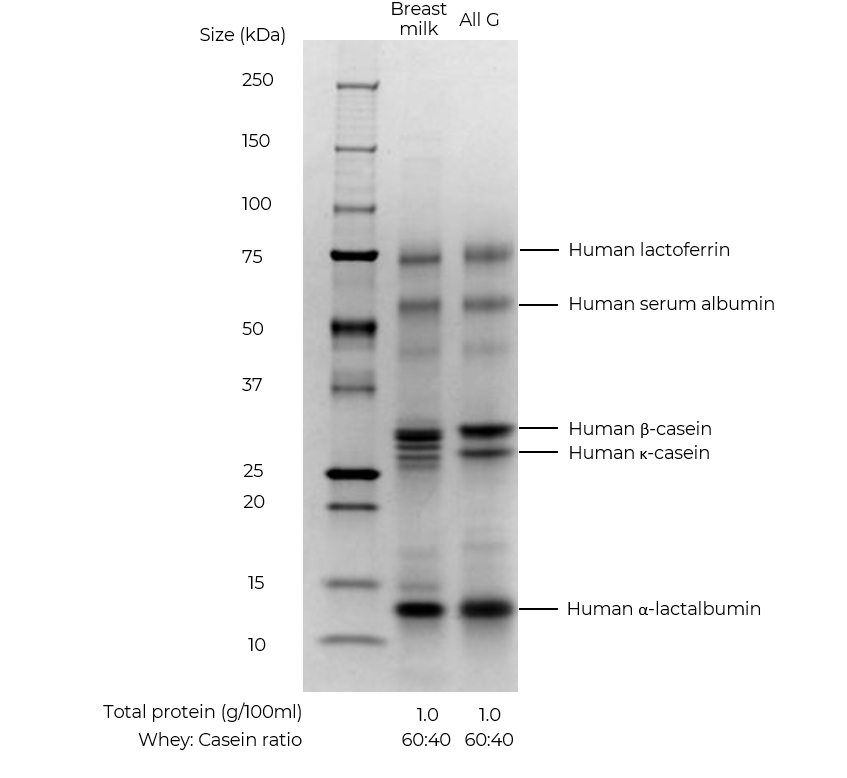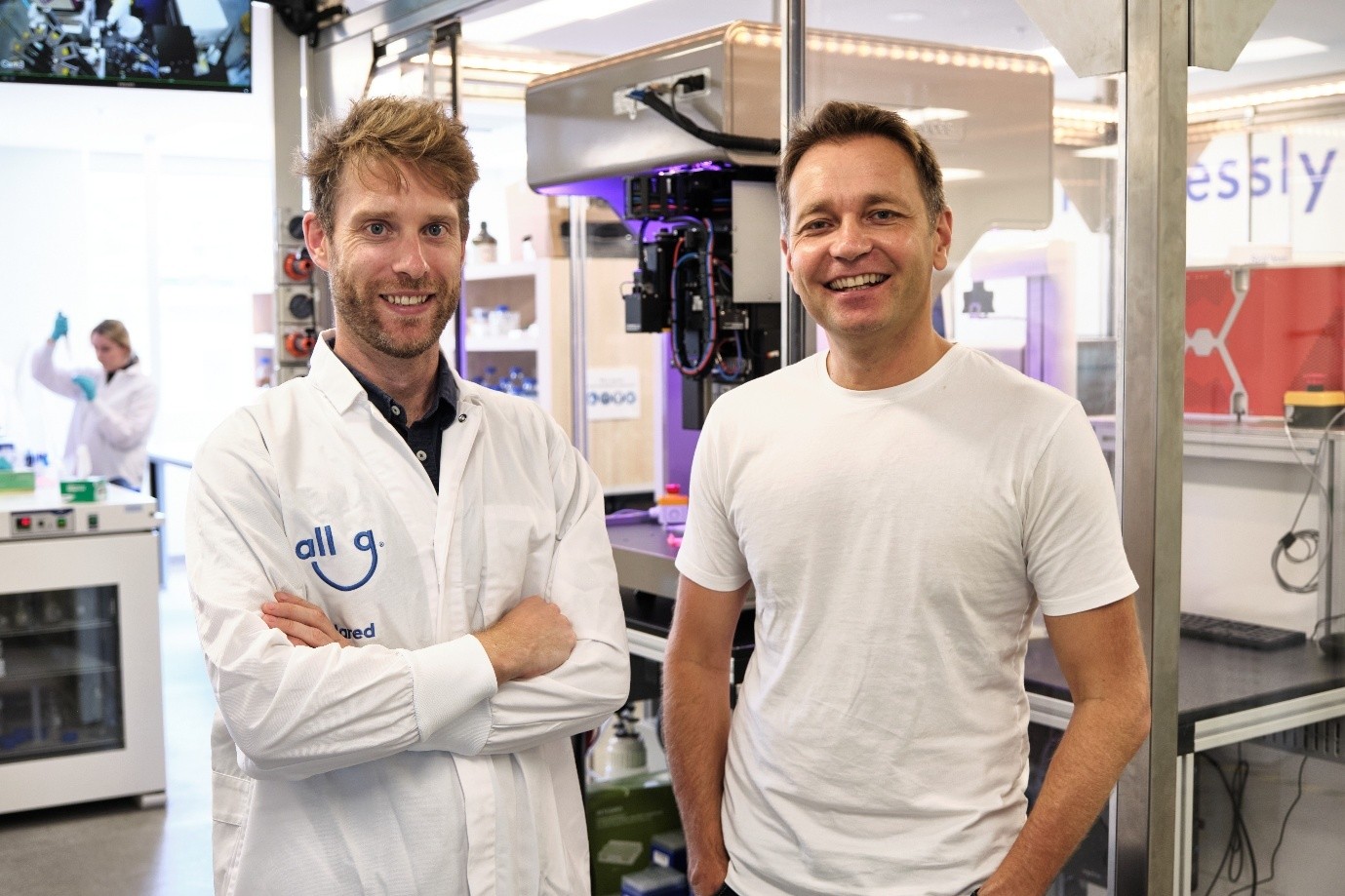Sydney-based All G claims it is forging a pathway to bring infant formula “dramatically closer to the nutritional gold standard of human milk” with breakthrough tech that forms human casein proteins into micelles, which are critical to the nutritional and functional benefits of breastmilk.
The startup, which plans to bring bovine lactoferrin to the market later this year followed by human lactoferrin in early 2026, has just filed a patent application for a formulation that includes five major human breast milk proteins made via precision fermentation: alpha-lactalbumin, lactoferrin, beta-casein, kappa-casein and serum albumin.
It is now talking to “multiple global infant formula companies” looking to develop products that more closely replicate human breast milk, said CEO Jan Pacas.
“This is the closest infant formula has ever come to the real thing,” added Pacas, who cofounded Australia’s largest online pet care marketplace Mad Paws (which went public in 2021) and HR software startup Flare (sold to MYOB in 2022) before creating All G in late 2020.
He was joined the following year by Dr. Jared Raynes, a molecular biologist who first started working on producing phosphorylated beta casein proteins via microbial fermentation a decade ago at Australia’s national agency CSIRO.
‘No one else has been able to manufacture human casein micelles’
Raynes told AgFunderNews: “No one else has been able to manufacture human casein micelles. Most infant formulas today rely on bovine casein micelles, which are structurally and functionally different from those in human milk. Bovine caseins are larger, form firmer curds in the infant stomach, and are associated with slower digestion.
“In contrast, human caseins are softer, smaller and support steady nutrient release and more efficient absorption, better aligned with infant digestion and gut development.” This difference matters nutritionally, he claimed, “as it impacts how effectively nutrients are delivered during a critical window of growth.”
Without the micelle, which is critical for the delivery of calcium, phosphate, and other bioactive components, “the value of casein proteins is limited,” he said.

‘Interest from multiple global formula companies’
Most infant formula contains a base of carbohydrates, proteins (typically from cow’s milk but also from soy protein isolate), vegetable oils, vitamins and minerals. More premium products are also supplemented with nutrients such as synbiotics, lactoferrin, alpha-lactalbumin, MFGM, and OPOs.
In recent years, several manufacturers have also started to add human milk oligosaccharides (HMOS) such as 2’FL and LNnT made via precision fermentation, while some startups such as [the now defunct] Biomilq have used mammary epithelial cells to make rarer HMOs and other nutrients in breast milk such as osteopontin and exosomes.
Precision fermentation startup Helaina now offers human lactoferrin for the adult nutrition segment with a view to moving into the more heavily regulated infant formula market, while Better Dairy has developed tech to produce osteopontin via yeast fermentation.
However, human casein micelles “have never been produced at scale and assembling them into a micelle structure was technically out of reach,” claimed Raynes, who noted that electrophoresis analysis shows that All G’s five-protein formulation closely mirrors the protein profile of human breast milk.
“This achievement offers a pathway to bring infant formula dramatically closer to the nutritional gold standard of human milk.”
He added: “Our focus is on B2B sales and we’ve already had interest from multiple global formula companies. Ultimately, we want to have impact at the global level and improve the quality of nutrition for as many infants as possible. Partnering with others is the best way to achieve that as quickly as possible.”
In the medium-term, All G plans to conduct clinical trials to “demonstrate the enhanced health benefits of its human milk protein ingredients,” says the firm.

Manufacturing and scaleup
As for scalability, said Raynes, “Our strains are already cost-effective for human lactoferrin and human caseins. We have multiple commercial partnerships lined up covering major Asian markets, Europe, and the US. We expect to be in commercial scale bioreactors (around 50kl – 100kl) by Q4 this year.
“We have already secured self-GRAS status for our bovine lactoferrin in the US and will be submitting to the FDA in the very near future. The landscape for approvals for human proteins is more complicated, but we are confident we have an approach that aligns with our launch and scale-up plan.”
An iron-binding anti-microbial protein found in mammalian milk, lactoferrin has benefits around immunity, iron regulation, digestive health, endurance, and skin health, but has historically only been available in small quantities owing to the costs and challenges of isolating it from milk (thousands of liters are required to make a single kilo).
By producing lactoferrin in fermentation tanks using genetically engineered microbes All G and others in this space are seeking to unlock new markets.
According to Raynes, “We’ve had conversations with big players and they said, if you can give us this price, we will start putting it in yogurts and other mainstream applications, which they just can’t at the moment with current prices. And we’re going to be able to achieve prices where they say, Okay, we could really open the market for lactoferrin.”




